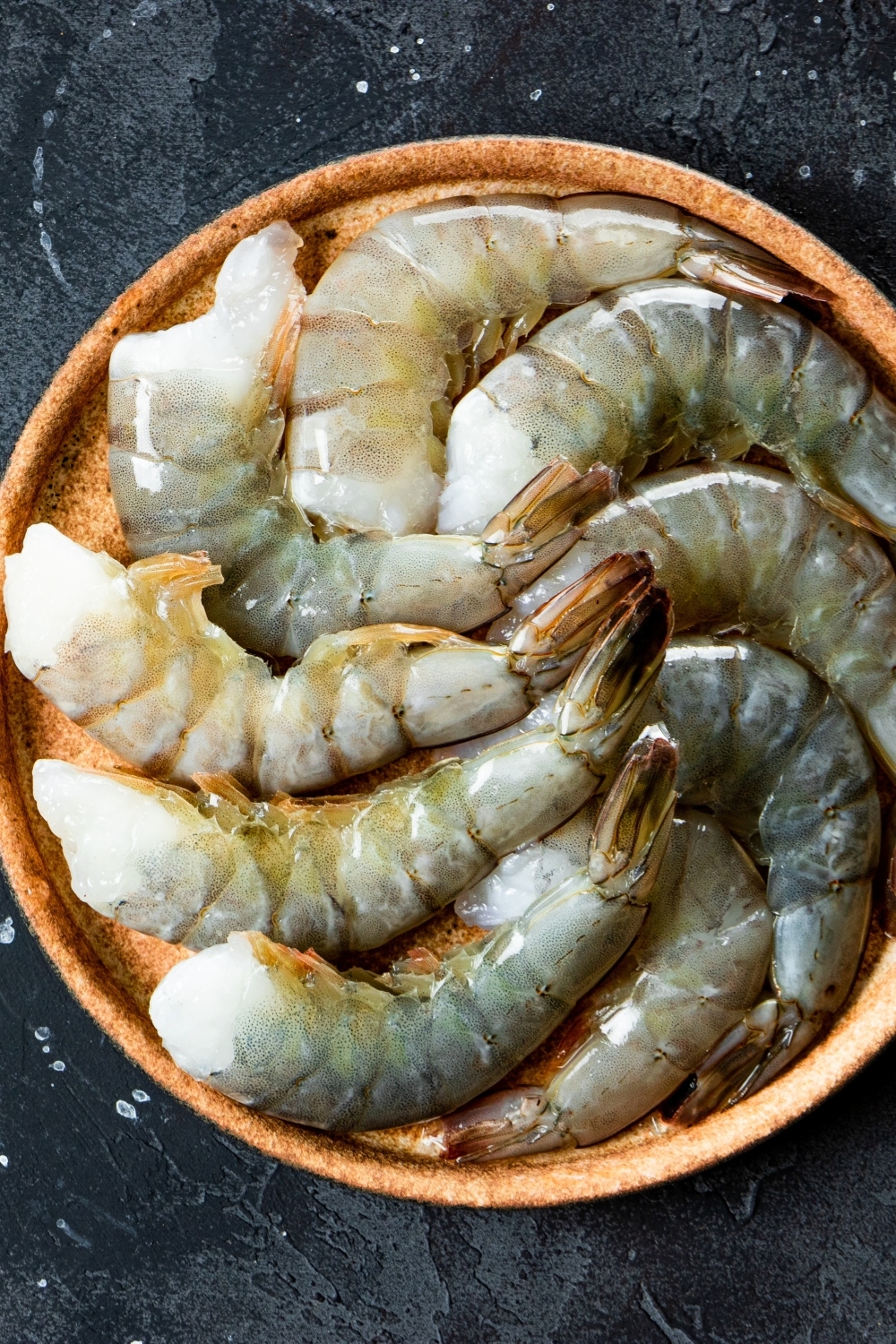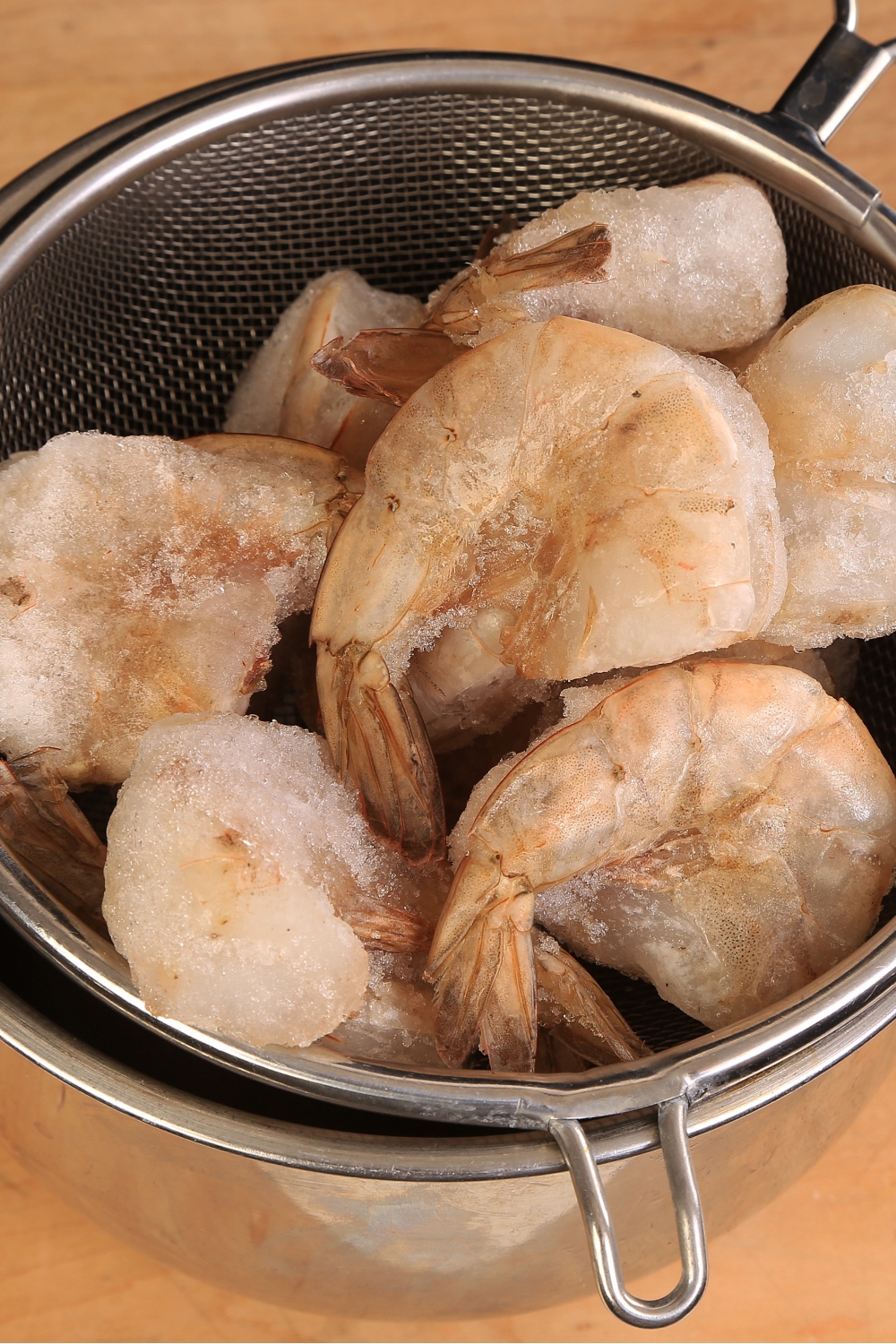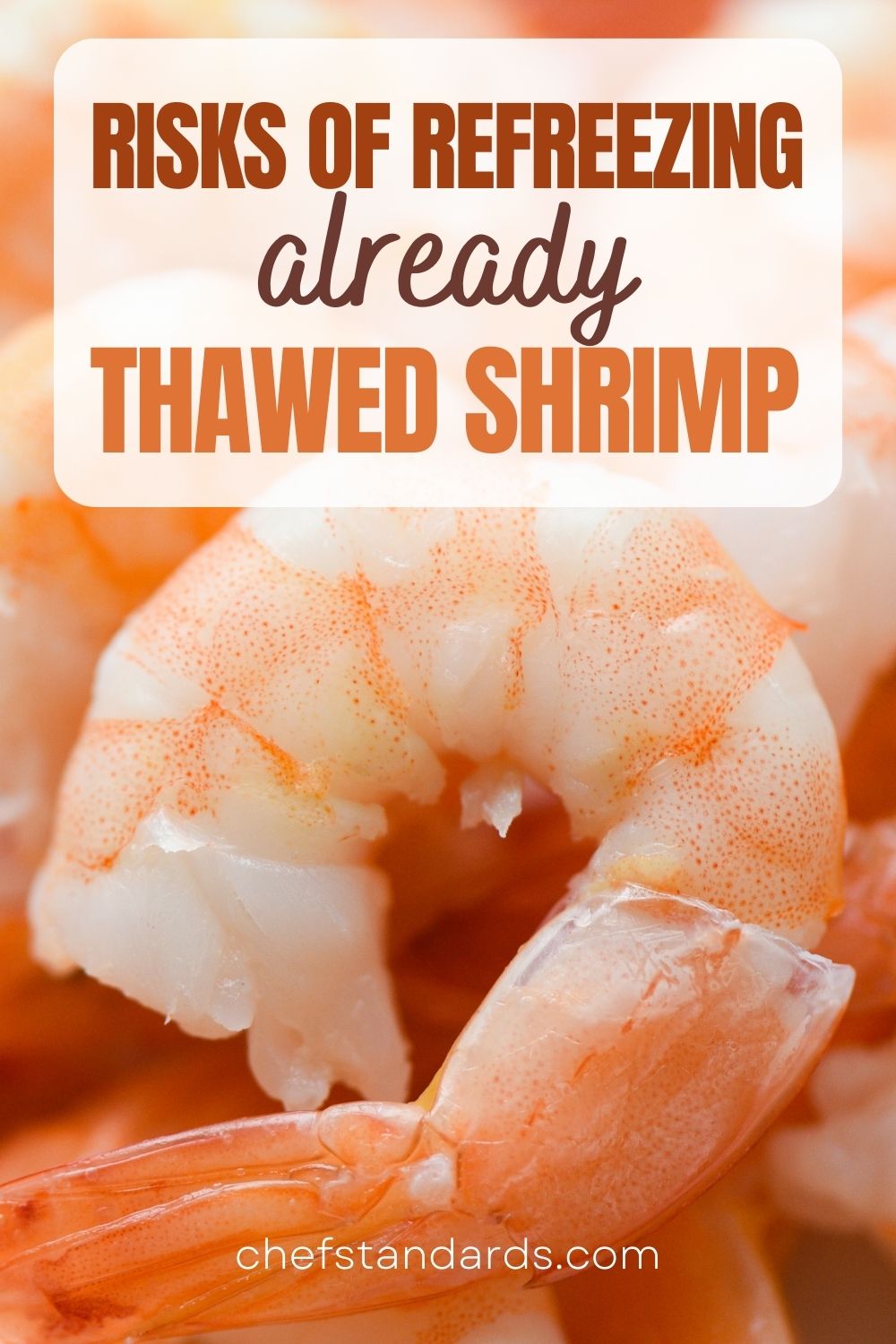Freezing has always been one of the safest options when you want to preserve food for longer periods of time. This is especially true when it comes to meat like chicken, as well as seafood.
Indeed, most fish stores keep their fish and other seafood frozen and sell them like that. One of those seafoods is shrimp and many people tend to keep it in the freezer for longer periods of time.
But what happens when you pull out more shrimp that you can use and don’t know what to do with it? Can you refreeze shrimp? Yes, you certainly can, but only in some situations. In others, it is not recommended.
Aside from that, you need to know the proper way to do that, as well as some other important tips and tricks.
Can You Refreeze Thawed Shrimp? Factors To Consider

Although shrimp is not a fish, it is a type of seafood, so it can be frozen successfully in order to preserve it for a long period of time.
Although the texture will change slightly due to the break of cell walls during the freezing process, there won’t be any significant changes when you freeze and thaw shrimp for the first time.
But what will happen when you freeze it again after that? It is easy to conclude that the texture and quality won’t be the same, but the good news is that you can minimize those negative effects if you go through the process the right way.
This is also the case with most other types of fish and seafood, including refreezing salmon as well.
So first, it is important to know what major factors to consider when refreezing shrimp.
• Initial Defrosting Method: Shrimp can be thawed in cold water, in the microwave, or in the fridge. Only if the shrimp was properly defrosted in the fridge, can you refreeze it successfully.
If it was defrosted under running cold water, you must cook it and let it cool completely before freezing it again.
If it was thawed in the microwave, refreezing is not an option.
• Amount of Time Before Freezing and Refreezing: The 2-hour rule suggests that if the shrimp (or any other perishable food) has been left outside at room temperature for more than 2 hours before initial freezing, you shouldn’t refreeze it.
If the temperature was above 90 degrees F and left outside for more than 1 hour, you should also avoid freezing it again.
If you left it in the fridge for more than 2 days after thawing, you should avoid refreezing it again.
• Cooked or Raw Shrimp: It is a slightly different process when refreezing cooked and raw shrimp, so I will explain that in detail later in the text.
How Many Times Can You Refreeze Shrimp?
One process of freezing already deteriorates the texture of shrimp, but the damage is not too big and can be controlled successfully if you follow the correct freezing guidelines.
It is similar to refreezing shrimp once. If you go through the process successfully and follow the recommended rules, the consequences will be minimized.
However, if you decide to refreeze it again after that, you have to be prepared for some more serious consequences, especially regarding texture and flavor. So, it is possible, but the quality won’t be the same as before.
Refreezing shrimp again for a second time is definitely something I wouldn’t recommend because, aside from the quality issues, the question of safety will also arise because of the high risk of bacterial growth.
All in all, although I wouldn’t recommend it at all, it is possible to refreeze shrimp twice and still be on the safe side, but the quality won’t be the same, and in some cases, there might be safety issues.
How Does The Shrimp Form In The Store Influence Your Choice?
You can find fresh, frozen, and pre-frozen shrimp at more shops that sell fish and seafoon.
Fresh shrimp is for all occasions, i.e., it is best to consume it right away because it is at its peak quality, but you can also freeze it and refreeze it.
When it comes to frozen shrimp, it is also perfectly fine. First, when taking it home, it is recommended to place it in a cooler bag and a few ice packs to remain cold until you get home.
When you get there, put it in the fridge or freezer right away. Nothing can go wrong if you thaw it and freeze it again. However, avoid any thawing method besides defrosting it in the fridge.
The only problem lies in pre-frozen shrimps. Many stores sell them as fresh, but in reality, they have been frozen and thawed already. So, it is always important to check if they are really fresh or pre-frozen.
If they are fresh, you can freely refreeze them, but if pre-frozen, refreezing is not an option.
How To Refreeze Raw Shrimp?

Now that you know the factors that influence shrimp refreezing, it is time to learn how to properly do that in order to minimize those unwanted negative effects and to enjoy all of its parts, from head to tail.
1. First make sure that your shrimp is in good condition (that there are no signs of spoilage), and that it has been thawed in the fridge for no longer than 2 days.
2. If it still has the shell on, do not remove it. The shell is very important during the freezing process because it protects the flesh of the shrimp.
3. After thawing, if you notice leaked water on your shrimp, strain the shrimp in order to remove it. However, make sure that you do this quickly because it is not good for the shrimp to be at room temperature for too long, especially if it is warm outside.
4. The major concern when freezing and refreezing shrimp is freezer burn, which can damage the texture of the shrimp. To avoid freezer burn, you have to store it in an airtight container or freezer-friendly zip-tog bag.
Aside from the fact that it will protect it from freezer burn, it will also protect it from absorbing odors of other foods, of course, if you seal it properly.
5. When the shrimp is properly stored in a bag or container, put it in the back of the freezer because the temperature there is more stable.
6. Label the container with the exact date of storage, and write that it has been refrozen already so that other people do not make the mistake of refreezing it again.
Can You Refreeze Cooked Shrimp?
Although refreezing raw shrimp is better than doing so with cooked shrimp, it is possible to do that.
It is especially important to cook the shrimp before refreezing if it has been thawed under running cold water. After it is defrosted, cook it immediately.
Once the shrimp is cooked, let it cool at room temperature (not more than 1 hour) and refreeze it right after that.
When it comes to the exact process of refreezing, it is almost the same as refreezing raw shrimp.
The key is in storing it in a well-sealed airtight container or freezer-friendly bag and label it properly.
What is The Shelf Life Of Refrozen Shrimp?
In general, shrimp can be kept in the freezer for up to 3-6 months once refrozen, the same as shrimp frozen for the first time.
However, I wouldn’t recommend letting it stay in the freezer for that long if you are freezing it for a second time.
For the best quality, it is ideal to keep it frozen for up to 1-2 months, i.e., if you want to preserve its texture and flavor to a certain degree.
How To Thaw Refrozen Shrimp?
From my experience with freezing, refreezing, and thawing shrimp, it is always best to thaw it in the fridge because that way you can avoid entering the “Danger Zone“.
Other defrosting methods can even be harmful when you thaw your shrimp for the first time, not to mention thawing it for the second time.
So, the fridge is the only thawing option for refrozen shrimp.
Simply place the frozen shrimp in a leak-proof container or a resealable plastic bag to prevent any drips.
Put the container or bag with the shrimp in the refrigerator, and let it stay there for a minimum of 12 hours, ideally overnight.
After that time frame, it is essential that you cook it within 1-2 days for the best quality.
What Are The Signs Of Bad Refrozen Shrimp?

Every type of seafood, including shrimp, is a very sensitive food. Freezing is also a very sensitive storage method. Refreezing shrimp is even more sensitive, so it is important to know how to recognize signs of spoilage.
This is even more important when you know that shrimp can be a hotspot for harmful bacteria that can easily cause foodborne illness or food poisoning, which can be a great threat to your health.
So, let’s look at the few major signs that will tell you that your shrimp is spoiled:
• Unpleasant odor: Fresh shrimp should have a mild, ocean-like smell. If the shrimp emits a strong, ammonia-like, or rotten odor, it is likely spoiled and unsafe to eat.
• Slimy texture: Fresh shrimp should have a firm texture and feel slightly slippery, but they should not be overly slimy or sticky. If the shrimp feels excessively slimy, it may be spoiled.
• Discoloration: Healthy shrimp should be translucent with a pinkish or grayish color, depending on the species. If you notice any unusual discoloration, such as yellow, green, or black spots, it could be a sign of spoilage.
• Mold or black spots: Any presence of mold or black spots on the shrimp is a clear sign of spoilage and it should not be consumed.
• Off-flavor: If the shrimp tastes unusual, sour, or bitter, it is likely not safe to eat.
• Texture changes: Shrimp that has become mushy, excessively soft, or has a mealy texture, has likely started to spoil.
• Shells and tails: If the shells or tails appear dark, discolored, or damaged, it may indicate that the shrimp is not fresh. Also, if the shell has fallen off, discard the shrimp because it is spoiled.
Two extra signs that your shrimp is probably inedible, but in reality, it has only lost its quality and freshness:
• Freezer Burn: Freezer burn happens when the shrimp loses moisture and appears discolored or dried out. This is often a result of shrimp sitting in the freezer for too long.
Although the flavor and texture will not be great, freezer-burnt shrimp will still be safe for consumption.
• White Spots on Shrimp: These spots are caused by a condition called “white spot syndrome”, which affects the shrimp’s gills and causes them to die.
Although it sounds nasty, shrimp with these white spots is still edible and pose no threat to your health.
How To Use Refrozen Shrimp?
Since refrozen shrimp loses its texture and flavor to some extent, it is not suitable for all dishes, especially not those that usually incorporate fresh shrimp.
Also, you shouldn’t consume refrozen shrimp raw, such as in sushi or sashimi, due to the increased risk of foodborne illnesses.
Instead, it should be used in cooked dishes like stir-fries, soups, stews, curries, or casseroles, where the texture is not so important.
Also, refrozen shrimp is less juicy, but that can easily be fixed when preparing it.
I also have to emphasize that it is possible to cook refrozen shrimp directly from the freezer.
You will have to cook it for a bit longer (usually for about 5 minutes) on high heat, but you will most certainly avoid overcooking.
Just a Few Additional Tips To Consider
• To avoid refreezing shrimp in the first place, it is best to freeze it in small portions.
• You should avoid refreezing seafood that has been in the freezer for a long time.
• If you decide to refreeze cooked shrimp, always check the spoilage signs after defrosting it later on.
• You can grill, stir-fry, or steam frozen shrimp without thawing, or, add it directly into cooking liquids.
• If the packaging is wet, replace the bowl with a dry one after defrosting; you can keep it in the fridge for up to 2 days.

